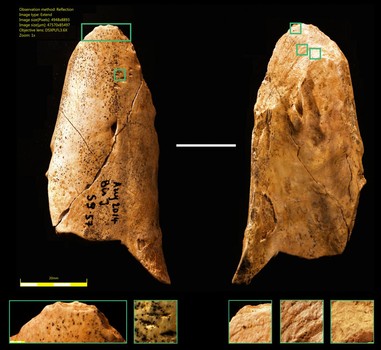The first documented bone tool that was made by Neanderthals and used by them has been discovered in the annual digs at the Grotte du Bison at Arcy-sur-Cure in Burgundy, France. The tool was discovered by Luc Doyon and a group of University of Montreal researchers.
The site where the tool was found is a known site of Neanderthal habitation from 250,000 years ago until 28,000 years ago. The tool dates to between 55,000 and 60,000 years of age. The tool is a bone device made from the left femur of an adult reindeer. The implement shows markings that indicate a Neanderthal honed the edge with a hard surface that was probably a rock. The implement is thought to have been used in the butchering of game.
Aggregations of animal bones have been found at this Neanderthal site and at other sites where Neanderthals were known to have lived in Germany and Spain. No other tool made from bone and fashioned for a specific purpose has ever been found that was created by a Neanderthal. The markings and the sharpness of the edge leave no doubt that this bone tool was manufactured by an individual that had the capacity to imagine and design.
The tool was designed to break bones so that the marrow could be extracted. Remnants of DNA from deer are present on the bone tool. The tool had multiple purposes. There is evidence on the tool that it was used as a scraper for hides and to sharpen stones for hunting. The discovery indicates the mental abilities of Neanderthals far exceeded what has been previously thought about this early human relative.















